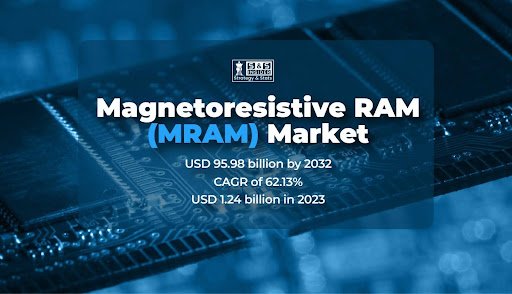The Semiconductor Market has emerged as one of the most dynamic and critical sectors in the global technology landscape. Semiconductors form the backbone of modern electronics, powering everything from smartphones and computers to automotive systems and industrial machinery. The continuous demand for advanced technology solutions, coupled with innovations in AI, IoT, and automotive electronics, has significantly driven the growth of this market. As industries worldwide accelerate their digital transformation journeys, semiconductors remain a key enabler for both established and emerging technologies.
Semiconductor Market Size and Growth Forecast
According to the SNS Insider, The Semiconductor Market was valued at USD 665.84 billion in 2024 and is expected to reach USD 1880.79 billion by 2032, growing at a CAGR of 13.86% over the forecast period 2025–2032. This rapid growth is fueled by the increasing adoption of electronic devices, rising demand for high-performance computing, and the expansion of 5G networks globally. Additionally, the automotive industry’s shift toward electric vehicles (EVs) and autonomous driving technology is creating a surge in semiconductor demand. These trends indicate that the semiconductor market will continue its robust expansion, presenting significant opportunities for manufacturers, technology innovators, and investors.
Request Free Sample Report @ https://www.snsinsider.com/sample-request/3959
Key Drivers of Semiconductor Market Growth
Several factors are propelling the growth of the Semiconductor Market. Firstly, the surge in consumer electronics, including smartphones, laptops, tablets, and wearable devices, drives the need for efficient, high-speed semiconductor components. Secondly, industrial automation and smart manufacturing are creating substantial demand for semiconductors that power sensors, robotics, and AI-driven systems. Thirdly, advancements in cloud computing and data centers require high-performance processors and memory solutions. Finally, the ongoing global rollout of 5G technology is boosting demand for advanced communication chips, offering faster data speeds and enhanced connectivity for consumers and businesses alike.
Challenges Facing the Semiconductor Market
Despite its rapid growth, the Semiconductor Market faces certain challenges. Supply chain disruptions, geopolitical tensions, and the high cost of manufacturing advanced chips can hinder market expansion. Additionally, the shortage of skilled professionals in semiconductor design and fabrication presents another hurdle. Regulatory constraints, particularly in regions with stringent trade and export policies, may also impact global semiconductor production and distribution. Addressing these challenges is crucial for companies aiming to maintain a competitive edge in this rapidly evolving market.
Emerging Opportunities in the Semiconductor Market
The Semiconductor Market offers several lucrative opportunities for industry players. The rise of electric vehicles, smart homes, and AI-driven technologies is creating demand for next-generation semiconductor components. Furthermore, innovations in semiconductor materials, such as silicon carbide (SiC) and gallium nitride (GaN), are enabling more efficient, high-power devices. Expansion into emerging markets across Asia-Pacific, Latin America, and Africa provides new growth avenues for semiconductor manufacturers. By leveraging technological advancements and tapping into new applications, companies can capitalize on the market’s immense potential.
Regional Insights in the Semiconductor Market
The Semiconductor Market shows distinct regional trends. North America continues to lead due to its strong technological infrastructure, presence of key semiconductor companies, and substantial R&D investments. The Asia-Pacific region, led by China, South Korea, and Taiwan, dominates in semiconductor manufacturing, benefiting from large-scale production capabilities and government support. Europe is witnessing steady growth driven by automotive electronics and industrial automation sectors. Meanwhile, emerging markets in Latin America and the Middle East present promising opportunities for expansion as digital adoption accelerates in these regions.
Future Outlook of the Semiconductor Market
The Semiconductor Market is poised for continued growth as technological innovations accelerate and global demand for electronics expands. Emerging applications, such as AI, IoT, autonomous vehicles, and 5G infrastructure, are expected to sustain long-term growth trends. Companies that invest in R&D, explore new materials, and strategically expand into high-demand regions are likely to gain a competitive advantage. The forecast suggests that the market will continue to witness double-digit growth, solidifying the semiconductor industry as a cornerstone of the global digital economy.
FAQs
Q1: What is the expected CAGR of the Semiconductor Market?
A1: The Semiconductor Market is projected to grow at a CAGR of 13.86% during the forecast period from 2025 to 2032, reflecting strong demand across various electronics and technology sectors.
Q2: What factors contribute to the forecasted growth of the Semiconductor Market?
A2: Key factors include rising adoption of consumer electronics, expansion of 5G networks, growth of electric vehicles, industrial automation, and advancements in AI and high-performance computing.Q3: Which regions are driving the growth of the Semiconductor Market?
A3: North America leads in technological infrastructure and R&D, Asia-Pacific dominates in manufacturing, and Europe grows steadily due to automotive and industrial applications, with emerging markets showing increasing potential.










